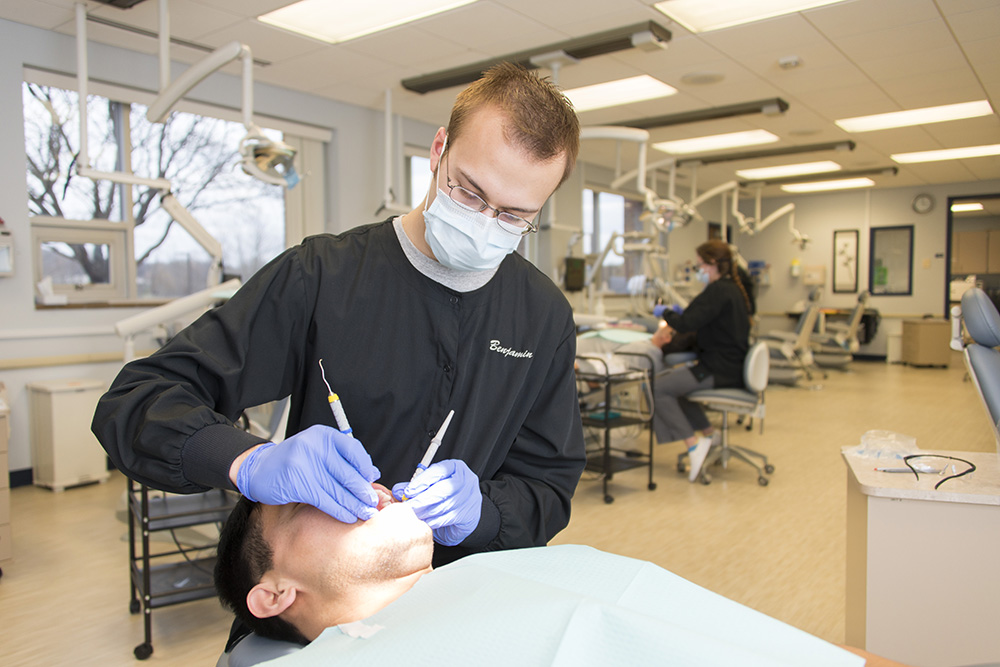Deep cleaning, also known as scaling and root planing, is a thorough dental procedure that goes beyond routine cleaning. It is often recommended when plaque and tartar have built up beneath the gumline, potentially leading to gum disease. The Dental Hygienist Dubai follows a systematic approach to ensure the mouth is cleaned effectively and comprehensively. Below are the detailed steps involved in the deep cleaning process.
Initial Examination
Assessing Oral Health
The process begins with a comprehensive evaluation of the patient’s oral health. The dental hygienist examines the mouth, teeth, and gums to identify areas with plaque buildup, signs of inflammation, and pockets between the teeth and gums.
Measuring Periodontal Pockets
Using a special dental probe, the hygienist measures the depth of the periodontal pockets. These are the spaces between the gums and teeth where bacteria can accumulate. If these pockets are deeper than the normal range, it indicates the presence of gum disease and the need for deep cleaning.
Preparation for Deep Cleaning
Explaining the Procedure
Before beginning, the hygienist explains the procedure step by step. This helps the patient understand what to expect and ensures they are comfortable throughout the process.
Protective Measures
The hygienist may place a protective bib over the patient’s chest and provide safety eyewear to prevent any debris from entering the eyes during the cleaning. The patient is also reclined to an optimal position to allow easy access to all areas of the mouth.
Scaling the Teeth
Removing Plaque and Tartar Above the Gumline
The first stage of deep cleaning involves removing plaque and tartar from the surfaces of the teeth, especially around the gumline. The hygienist uses handheld tools or ultrasonic instruments to break apart and remove these deposits.
Cleaning Below the Gumline
The hygienist then moves beneath the gumline to remove deposits from the tooth roots. This is essential in cases where bacteria and hardened tartar have accumulated in the periodontal pockets. Cleaning below the gumline reduces the bacterial load and promotes healthier gum attachment.
Root Planing
Smoothing the Root Surfaces
Root planing is a process where the hygienist smooths the root surfaces of the teeth. This helps eliminate rough areas where bacteria can easily cling and form new plaque. Smoother surfaces also help the gums reattach to the teeth more securely.
Encouraging Gum Reattachment
By smoothing out the roots, the hygienist helps the gum tissue to begin healing and reattaching to the cleaned root surfaces. This step is crucial for reducing pocket depth and improving overall gum health.

Flossing and Polishing
Thorough Flossing Between Teeth
Once the scaling and root planing are complete, the hygienist flosses between all teeth. This helps to remove any residual debris and ensures the spaces between teeth are also cleaned.
Polishing the Teeth
To finish the cleaning, the hygienist polishes the teeth using a rotating tool and a mild abrasive paste. Polishing smooths the tooth surfaces and removes minor stains, leaving the teeth looking and feeling clean.
Final Rinse
Clearing Away Loose Particles
A thorough rinse is performed to remove any leftover debris or cleaning agents. The rinse ensures that the mouth is clean and refreshed, completing the deep cleaning session.
Oral Health Instructions
Educating on Daily Cleaning Habits
After deep cleaning, the Dental Hygienist in Dubai often provides instruction on proper brushing and flossing techniques. This helps the patient maintain the results of the cleaning and prevent further plaque buildup.
Discussing Maintenance Visits
The hygienist may also recommend a schedule for future cleanings and evaluations. These visits help to monitor oral health progress and maintain the improvements achieved through deep cleaning.
Monitoring and Evaluation
Follow-Up Check
A follow-up appointment may be scheduled to examine the gums and measure pocket depths again. This allows the hygienist to assess how well the gums have responded to the treatment and if further steps are necessary.
Adjusting Oral Care Plans
Based on the follow-up findings, the hygienist may offer updated recommendations for at-home oral care routines. This personalized advice helps the patient stay on track with their oral hygiene goals.
Maintaining Results
Consistent Oral Hygiene
After deep cleaning, consistent brushing and flossing are essential to prevent the recurrence of tartar buildup. Patients are encouraged to clean their teeth thoroughly at least twice a day and use proper techniques.
Regular Dental Visits
Routine visits allow for professional cleanings and monitoring of oral health status. These visits play a key role in catching any early signs of gum problems and preventing them from progressing.
Conclusion
The deep cleaning process carried out by a dental hygienist is a structured and detailed approach to restoring oral health. From the initial assessment and measuring gum pockets to the thorough scaling, root planing, and polishing, each step is designed to remove harmful plaque and tartar, reduce inflammation, and support gum healing. Through clear instructions and ongoing care, patients can maintain a healthier mouth and reduce their risk of developing advanced gum disease.



